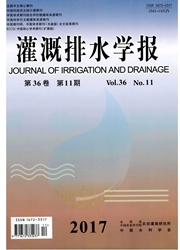

 中文摘要:
中文摘要:
为了改善黄河上游宁蒙河段的淤积现状,本文利用上游龙羊峡、刘家峡水库联合运行调度,人造可控洪峰以冲刷河道。首先分析了水沙调控的最佳时机、构建了水沙调控指标体系;其次,建立了多目标的水沙调控模型,采用改进带精英策略的快速非支配排序遗传(NSGA-Ⅱ)求解模型,量化了丰水年或偏丰水年的水沙调控成果;再次,以四维矢量坐标系代表各调控目标,对不同年份的水沙调控成果进行敏感性分析,阐明了调控流量、供水等变量对各调控目标的影响;最后,揭示了各调控目标之间的相互转化关系。研究成果对开展黄河上游水沙调控具有重要的指导意义。
 英文摘要:
英文摘要:
To reduce sedimentation in the Ningxia-Inner Mongolia reaches of the upper Yellow, joint operation schemes of the Longyangxia and Liujiaxia cascade reservoirs were studied in this work to scour the river channel using artificial controlled floods. First, we analyzed the best time for regulating water and sediment and established a system of indexes to character the regulation. Then, a multi-objective operation model was developed and solved using a non-dominated sorting genetic algorithm(NSGA-Ⅱ) to quantify the regulation effect in wet years or partial wet years. Third, four-dimensional vector coordinate systems were adopted to describe the objectives of the regulation schemes, and their sensitivity in different years was analyzed to clarify the impact of variables, such as controlled flow and water supply, on each objective. Lastly, transformation relationships among the objectives were revealed. The results are of great significance for implementing water and sediment regulation in the upper Yellow.
 同期刊论文项目
同期刊论文项目
 同项目期刊论文
同项目期刊论文
 期刊信息
期刊信息
